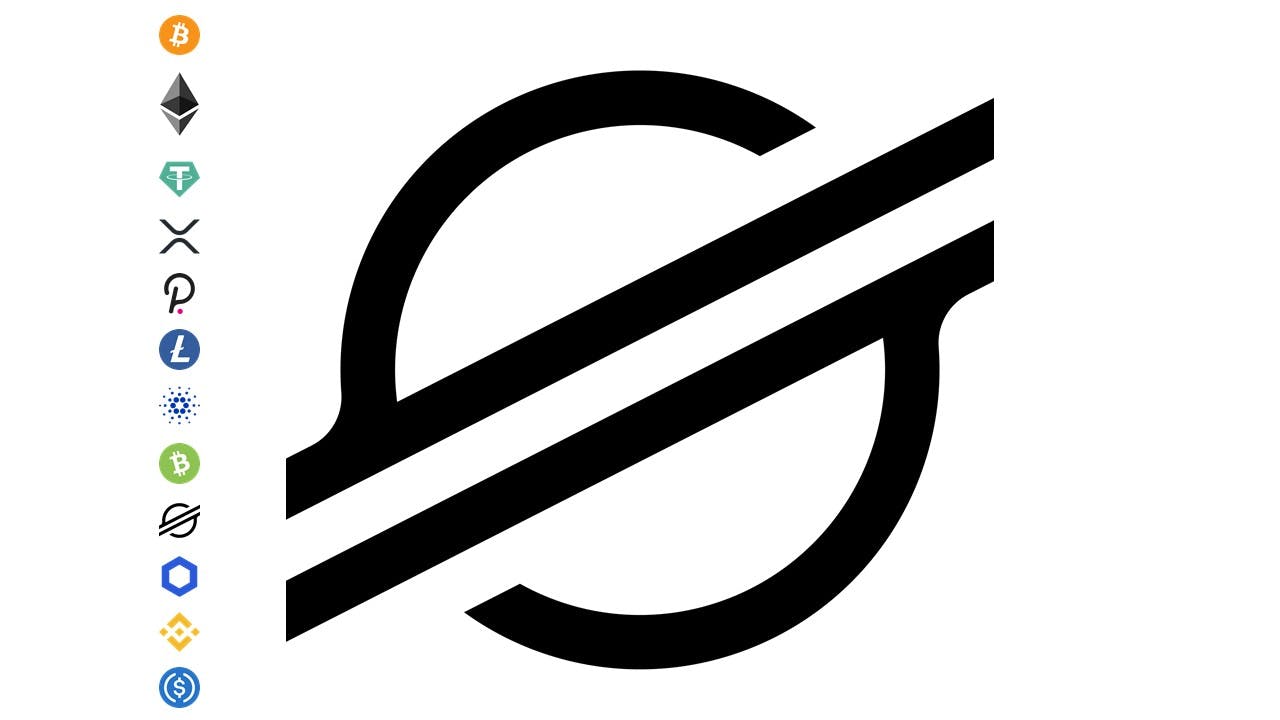April 30, 2021 | Max Atallah

#9 Legal Analysis of Stellar Lumens (XLM)
In February we started our 12-part article series on cryptocurrencies and their legal framework. Last time we published our article on Chainlink’s native token LINK, and this time we cover Stellar Lumens (XLM) – the promising competitor of XRP and 15th biggest crypto by its current market cap.
XLM in a Legal Nutshell
Created by Jed McCaleb and Joyce Kim in 2014, XLM is the native token of the Stellar Network, i.e., the decentralized peer-to-peer framework used for real time asset transfers. After originally having been an outspoken competitor to traditional banks, Stellar is today contrariwise partnered with the banking sector and especially focused on the development of central bank digital currencies. As an example, the Stellar Development Foundation is currently working on implementing its solutions on digital assets together with the Ministry of Digital Transformation of Ukraine.
Simply put, the Stellar Network is an open source, distributed, and community owned blockchain network used for cross-asset transfers of value. Asset transfers can be made using the networks native token XLM, or alternatively, in any other tokenised asset – say dollars – where XLM can function as an intermediary currency. Even if the transferred asset would be other than XLM, the token is used for transaction costs within the network. It is also required by the network’s design, that each account hold a small number of XLM at all times.
U.S. Regulation of XLM
As referred in our earlier articles, it is hard to find a uniform regulatory approach to cryptocurrencies in the U.S., as the legislation varies between states and different authorities are presenting differing interpretations on the definition of cryptocurrencies. For example, The Securities and Exchange Commission (SEC) has been indicating that it considers certain cryptocurrencies to be securities by applying the so-called Howey Test, despite its origin in traditional investment contracts, e.g., securities. This interpretation tendency has been witnessed lately in the SEC’s ongoing proceedings against Ripple Labs Inc., which is most likely of certain interest at Stellar headquarters, given the similarities between the operations of the two companies, and the SEC’s statement that Ripple would have been operating unlawfully by running ‘an ongoing ICO’ – somewhat identical actions to those of Stellar.
In turn, the Internal Revenue Service (IRS) sees cryptocurrencies as property and has issued tax guidance on the matter, whereas the Commodities Futures Trading Commission (CFTC) encompasses cryptocurrencies to be commodities as described in the Commodity Exchange Act.
In December 2020, the Financial Crimes Enforcement Network (FinCEN) published a notice of proposed rulemaking, proposing requirements for banks and money services businesses related to certain transactions involving convertible virtual currency or digital assets with legal tender status. In this regard, several parties including the Stellar Development Foundation have joined together expressing concerns on the proposal’s extensive consequences and possible negative impacts on the sphere of blockchain and crypto. Denelle Dixon, CEO of Stellar Development Foundation, has highlighted that new technology deserves new approaches to regulation, stating the proposal from FinCEN being antique and unsuitable for decentralized financial systems – such as the solutions provided by Stellar.
At the same time, lawmakers in the U.S have introduced a bill known as ‘The Eliminate Barriers to Innovation Act of 2021’, that seeks to clarify crypto regulation by establishing a working group of representatives from the SEC and the CFTC. The bill has passed the U.S House of Representatives and was received by the Senate on April 22nd, being currently reviewed by the Committee on Banking, Housing and Urban Affairs. The legislation is ultimately aiming to clarify the definition of what makes cryptocurrency a security or a commodity, and to solve the current ambiguous situation regarding jurisdiction areas of U.S. authorities, striving to make a clearance on the rules deciding whether the SEC or another regulatory agency has jurisdiction over a particular token or cryptocurrency. As such this is indeed a very welcomed step of development, as the current varying legislation between states and authority dependent interpretations combined with simultaneous jurisdiction claims of authorities has left the U.S. crypto operators in uncertainty for many years.
Although it yet remains to be seen however the crypto positive regulative aims are reached or not, one can be sure that the U.S. crypto industry is one step closer to what it can reasonably be said to deserve – a functional 21st century regulatory framework.
EU Regulation of XLM
Within the EU, XLM has a clearer regulatory situation as the EU cryptocurrency legislation is more coherent than in the U.S. In short, XLM is considered as a cryptocurrency and not a security. As stated in the Fifth Money Laundering Directive (5AMLD, EU 2018/843), virtual currencies are defined as a digital representation of value i) that is not issued or guaranteed by a central bank or a public authority, ii) is not necessarily attached to a legally established currency and does not possess a legal status of currency or money but is accepted by natural or legal persons as a means of exchange and iii) which can be transferred, stored, and traded electronically. Therefore, entities trading XLM, and other cryptocurrency service providers are obligated by the EU Member State’s implementation of the 5AMLD and other national regulation, being subject to conventional EU regulation on customer due diligence, risk assessments, Fit & Proper as well as other applicable national legislation.
Even if the EU Member States’ national legislation on cryptocurrencies differ slightly, it is from a longevity point of view recommendable to be proactive and follow the example of the stricter Member States and their ambitious level of maintaining and creating industry standard compliance. This is said especially considering the upcoming EU cryptocurrency regulation that is going to unify and tighten the rules on crypto even further.

30.04.2021 MAX